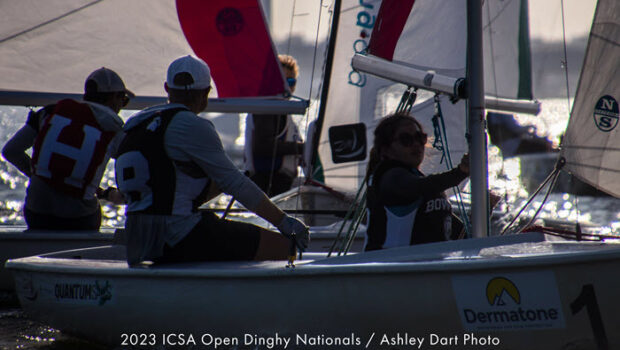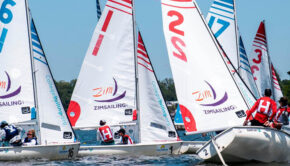College Sailing’s Big Mistake
Published on July 2nd, 2023
When youth sailing in the USA was organized as a national effort in the 1980s, it improved participation in the short term but arguably impacted the sport beyond the youth years. In this report, John Loe (St. Mary’s ’08) sees how college sailing is doing the same thing:
Fifteen years ago, college sailing began a transformation that is now impacting yacht clubs and adult sailing competition across the country.
For decades college sailing provided racing among varsity and club level teams with various levels of funding, coaching, and support. It wasn’t an NCAA sport – and still isn’t. The Inter-Collegiate Sailing Association, the governing body, is run by the coaches, whether by name or by title; only the coaches at the more storied programs have the institutional knowledge, financial incentive, and staying power to really run things.
But here’s what’s happened and how the rest of the sailing world is paying for it.
Under the branding of “professionalizing the sport”, several of what the sailors call “no-fun rules” were implemented. Most of these rules were put in place by individual programs, led by coaches, all pushing this transformation together.
Social gatherings of the eighteen odd teams gathered in a college town for a regatta were effectively banned. The end of the year National Championship and All-American banquet was initially made dry – even for twenty-two-year-old graduates – and has now been completely eliminated.
This wonderful, annual affair, the type familiar to any professional or yacht club member, has been reduced to a Zoom call or awards handed out in a parking lot. The Everett B. Morris Award, college sailing’s version of the Heisman Trophy, doesn’t earn you a trip to the Downtown Athletic Club – just a piece of paper handed to you on the dock.
Other rule changes included limiting the length of the seasons, hours available for racing during a day, and rules about practice. But it was the rules aimed at reducing and limiting the great social scene of college sailing that’ve done lasting damage to sailing in America.
The incentives for those pushing these changes were obvious then and now. The coaches wanted more credibility and legitimacy in their athletic departments. Nick Saban’s players don’t go to a toga party – why should ours? Shortening the seasons, reducing the number of intersectional regattas, limiting times on race days and practices – well, if you’re on salary…
For a part of the sport long known for forging lifelong friendships between sailors of different teams, it’s sad to go to a college regatta now. Off the water, the teams hardly mingle. On the water, post college sailors no longer flock to a one design class like they once did. It’s great to see the success of the Melges 15 class, but it’s not the same crowd that used to attend Vanguard 15 events.
Keelboat team racing is still strong, but instead of having waiting lists, host clubs are reduced to begging teams to attend, often forced to rely on local, lesser teams to fill vacancies. Meanwhile, the average age climbs at keelboat team racing regattas. College sailing produces the finest team racers in the world – but without friends from other college teams, like generations prior, they’re quitting.
If the success of these changes is to be measured by a college sailing team’s legitimacy in the athletic department – did it work? TV coverage of the sport is down. It’s still not an NCAA sport, and appears no closer. Our Olympic medal haul is down. Maybe coaching salaries are up?
Ask anyone involved in recruiting new members to sailing programs or clubs across the country, and they’ll tell you – it’s tough. The data on sailboat racing attendance is mixed, at best. The way college sailing was transformed over the last fifteen years is a big reason why.









 We’ll keep your information safe.
We’ll keep your information safe.